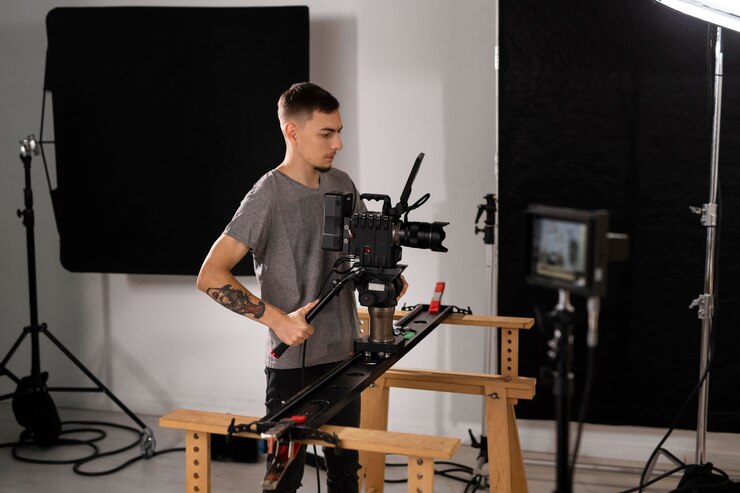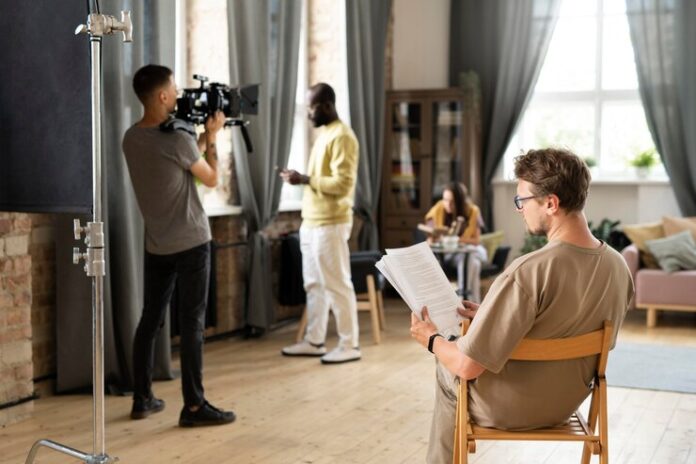Introduction to Back Casting Rooms Defining the Concept
Imagine a space where creativity breathes life into ideas and imagination takes center stage. Welcome to the back casting room—a haven that blends art and technology to shape groundbreaking narratives in film and design. But what exactly is a back casting room? For film enthusiasts and interior designers alike, it’s a dedicated space for rehearsals and brainstorming, where the magic of storytelling and the intricacies of design converge.
Creating a back casting room involves more than just setting up a space with a few chairs and a table. It’s about crafting an environment that fosters creativity and encourages free expression. It’s a sanctuary where film directors, designers, and creatives from various fields gather to experiment with ideas, refine concepts, and collaborate on projects. Whether you’re revamping a scene or sketching a layout, the back casting room is where it all begins.
This blog post will guide you through the essentials of back casting rooms, exploring their significance in the creative process and offering tips for setting up your own. From understanding their evolution to exploring future trends, we’ll cover everything you need to know about these creative hubs.
The Evolution of Back Casting Rooms in Film and Design
Back casting rooms have come a long way since their inception. In the early days of cinema, these spaces were simple, often improvised out of necessity due to budget constraints. However, as the film industry evolved, so did the need for more sophisticated and functional environments to support the burgeoning demands of storytelling and design.
Originally, back casting rooms were merely empty spaces where actors could rehearse lines and directors could sketch out scenes. These rooms often lacked the technological tools and design elements that characterize modern setups. Yet, they played a crucial role in the filmmaking process, allowing for experimentation and immediate feedback.
Over time, as technology advanced and the film industry flourished, back casting rooms began to incorporate elements that enhanced the creative process. From soundproof walls to multimedia equipment, these spaces became more versatile and adaptive. Interior designers started collaborating with filmmakers to create environments that both inspired and facilitated creativity. This evolution continues today, with back casting rooms now being seen as essential to both the film and design industries.
The Importance of Back Casting Rooms in the Creative Process
Why are back casting rooms so vital in the creative process? At their core, these spaces serve as incubators for ideas. They provide a safe and flexible environment where creativity can flourish without the constraints often found in traditional office or studio settings.
In the film industry, back casting rooms are where actors and directors refine their craft. They allow for experimentation with different angles, lighting, and dialogue, which can significantly impact the final production. Meanwhile, in design, these rooms are where sketches come to life, layouts are debated, and innovative concepts are born. The ability to visualize and test ideas in a collaborative setting is invaluable.
Furthermore, back casting rooms break down hierarchical barriers. They encourage open dialogue and equal participation, fostering a sense of community among team members. This collaborative spirit not only enhances creativity but also leads to more cohesive and successful projects. For any creative professional, the back casting room is a place where inspiration and innovation go hand in hand.
Design Elements and Technologies Used in Modern Back Casting Rooms
Creating an effective back casting room involves careful consideration of both design elements and technological advancements. The goal is to cultivate a space that inspires creativity while offering the necessary tools to bring ideas to fruition.
First, let’s talk about the design elements. The layout of a back casting room should be open and flexible, allowing for easy reconfiguration as needs change. Comfortable seating, ample lighting, and soundproofing are essential to ensure a conducive environment for brainstorming and discussions. Incorporating elements of nature, such as plants or natural light, can also enhance the ambiance and foster a sense of calm and focus.
On the technology front, modern back casting rooms are equipped with state-of-the-art tools to aid in the creative process. This includes high-quality audio-visual equipment for rehearsals and presentations, interactive whiteboards for sketching and annotating ideas, and virtual reality systems for immersive design experiences. Interior technology plays a significant role in enhancing functionality and providing new avenues for creativity, making these rooms indispensable in today’s fast-paced world.
Case Studies Successful Back Casting Room Implementations in the Film and Design Industries
To truly understand the impact of back casting rooms, let’s explore some real-world examples of their successful implementation. These case studies highlight how different industries leverage these spaces to push creative boundaries.
In the film industry, the renowned Pixar Animation Studios is known for its innovative use of back casting rooms. At Pixar, these spaces are designed to facilitate collaboration and creative exploration among animators, directors, and writers. The rooms are outfitted with advanced technology and inspiring artwork, creating an environment that encourages experimentation and storytelling.
In the realm of design, the architecture firm Zaha Hadid Architects utilizes back casting rooms to bring architectural concepts to life. With cutting-edge technology and a focus on sustainability, these spaces allow designers to visualize projects in real-time and make informed decisions collaboratively. The seamless integration of interior technology enhances efficiency and creativity, leading to groundbreaking architectural designs.
Both examples demonstrate the versatility and importance of back casting rooms in nurturing creativity and innovation. They highlight how these spaces serve as catalysts for turning imagination into reality, making them essential for any creative endeavor.
Tips for Creating Your Back Casting Room Budgeting, Layout, and Technology

Interested in setting up your own back casting room? Here are some practical tips to help you create a space that meets your needs while staying within your budget.
Start by determining your primary objectives for the room. Are you focused on film production, interior design, or another creative pursuit? Understanding your goals will guide your design choices and equipment selection. Next, consider your budget. While it’s tempting to invest in top-of-the-line technology and furnishings, remember that creativity often thrives in simplicity. Prioritize must-have features and gradually add enhancements as your budget allows.
When planning the layout, aim for an open and adaptable space. Movable furniture and modular setups offer flexibility for different activities and group sizes. Ensure that the room is well-lit and incorporates elements that promote creativity, such as inspiring artwork or personal touches.
Finally, invest in essential technology that supports your creative process. This might include a projector for presentations, sound equipment for rehearsals, or design software for visualization. Choose tools that align with your goals and enhance your workflow. With thoughtful planning and creativity, you can create a back casting room that becomes the heart of your creative projects.
Future Trends in Back Casting Rooms
As technology continues to evolve, so too will the concept of back casting rooms. Looking ahead, several trends are likely to shape the future of these creative spaces.
One emerging trend is the integration of artificial intelligence (AI) and machine learning in the creative process. AI-powered tools can analyze data and provide insights that enhance decision-making and creativity. For example, predictive algorithms could suggest design improvements or optimize film scenes, elevating the quality of the final product.
Another trend is the increasing use of virtual and augmented reality (VR/AR) technologies. These immersive tools allow creatives to visualize concepts in three dimensions, providing a deeper understanding of spatial relationships and design elements. VR/AR can transform back casting rooms into dynamic environments where users can interact with their ideas in real-time.
Sustainability and eco-friendly design will also play a role in shaping future back casting rooms. From energy-efficient lighting to sustainable materials, there is a growing emphasis on reducing the environmental impact of creative spaces. Incorporating green practices not only aligns with broader societal goals but also creates a healthier and more inspiring environment for creativity to flourish.
Conclusion The Role of Back Casting Rooms in Shaping the Future of Film
Back casting rooms are more than just physical spaces; they are where the seeds of creativity are nurtured and grown. These essential environments bring together technology, design, and human ingenuity, acting as the driving force behind innovation in film and design.
